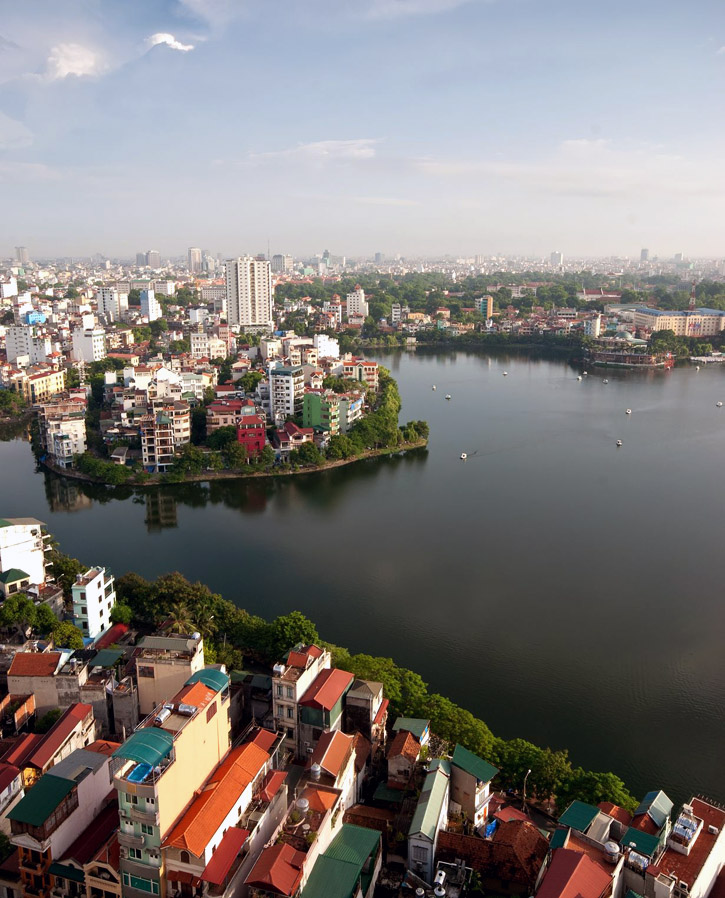The best place to start when planning a trip is with the most basic step: how you’re going to reach your destination. Travel to Vietnam is fairly easy, with most airlines offering service to its major airports. Here you’ll find an overview of three ways to reach Vietnam: by air, cross-border bus, and as a part of an organized tour.
Travelers may enter Vietnam by air through its three largest airports: Tan Son Nhat International Airport (SGN) in Ho Chi Minh City; Noi Bai International Airport (HAN) in Hanoi; and Danang International Airport (DAD) in Danang. From there, plenty of smaller regional airports serve the more remote areas of Vietnam.
While dirt-cheap fares are offered by carriers like China Eastern and China Southern, these companies are not known for their service or safety ratings.The most expensive part of your trip to Vietnam will be the plane ticket. Even bargain fares across the Pacific are not cheap. Still, there are a couple of strategies to make your airfare as affordable as possible. Websites like Kayak, Sky Scanner, and Expedia offer travelers a comprehensive range of airlines. When booking through these sites, monitor airfare prices 6-8 weeks in advance. While prices may fluctuate to some degree, USD$100-200 either way, round-trip tickets hover at about USD$1,000. Those leaving from the West Coast of the United States will find slightly cheaper fares; East Coasters and anyone traveling from the middle of the continental United States should expect four-figure prices.
Most travelers to Vietnam pass through the capital, Hanoi, not only for its sights, sounds, and savory cuisine, but also for its status as a hub, connecting popular destinations like Sapa and Ha Long Bay with the rest of Vietnam. Photo © Michalakis Ppalis/123rf.
It is sometimes possible to save money by flying into Los Angeles International Airport (LAX) with a budget airline and then heading for Asia from there. When traveling to Vietnam, most routes pass over the Pacific, connecting to Ho Chi Minh City or Hanoi in major hubs like Seoul, Hong Kong, Tokyo, or Taipei. A few airlines go the opposite direction, passing through Europe and the Middle East.
While dirt-cheap fares are offered by carriers like China Eastern and China Southern, these companies are not known for their service or safety ratings. Carriers like EVA, Japan Air, Emirates, Cathay Pacific, United, Singapore Airlines, and Qatar Airlines all serve Vietnam’s major airports and, for a few extra dollars, are reliable, professional, and usually more comfortable (particularly important for a 14-hour flight).
Vietnam shares several foreigner-friendly overland border crossings with its neighbors: five with Cambodia, six with Laos, and three with China. These crossings are fairly straightforward but, like any point of entry into Vietnam, you are required to obtain a valid visa prior to arrival. With the exception of e-visa processing, which is only available at the country’s three largest airports, no crossing in Vietnam will supply you with a visa at the border gate. Regularly scheduled buses pass through the country’s frontier areas on a daily basis and often provide service to major cities in neighboring countries. There are no international railways linking Vietnam to its neighbors.
Several budget airlines fly to and from Vietnam. Direct flights depart from major regional airports in Bangkok, Kuala Lumpur, and Singapore, while connecting flights go through the aforementioned hubs to and from dozens of destinations within Southeast Asia. Airfare from neighboring countries is usually reasonable. But tickets from destinations like Laos and Cambodia are often more expensive on account of their size relative to some of Southeast Asia’s larger hubs.
Regional budget airlines such as Air Asia, Jetstar, and Tiger Air serve Southeast Asia’s major airports, including those in Thailand, Cambodia, China, Laos, Malaysia, Myanmar, and Vietnam. Air Asia’s network is particularly extensive, providing connecting flights from across the region, while Tiger Air and Jetstar both fly to Australia and a handful of Southeast Asian nations. Direct flights are available from larger hubs, such as Suvarnabhumi Airport in Bangkok or Kuala Lumpur’s International Airport. These are the most affordable of the bunch, but most budget airlines within the region tack on additional fees for just about everything; read the fine print when booking these fares.
In any given tourist destination, there are dozens of companies offering organized day trips and multi-day tours. The majority of Vietnam’s cheaper travel outfits follow the same tourist trail, offering cookie-cutter itineraries that present little in the way of authenticity or spontaneity. Larger companies have day trips for as little as VND100,000; these trips provide an easy way to meet other travelers, but the tours themselves are not groundbreaking. In most cases, if you’re up for the challenge it’s more worthwhile to make the trip on your own. For certain excursions (treks in Sapa, for example), hiring a guide and paying the extra cash is recommended to make the most of your time.
More independent tour outfits are popping up all the time. Many of these private companies have done great things for the country’s tourism image, providing foreign travelers with exciting, worthwhile experiences that also benefit the local community. While prices are higher, these customized tour outfits are usually affordable when split between several people and the level of service is a cut above what you would find in a larger, corporate tour company.
Excerpted from the First Edition of Moon Vietnam.